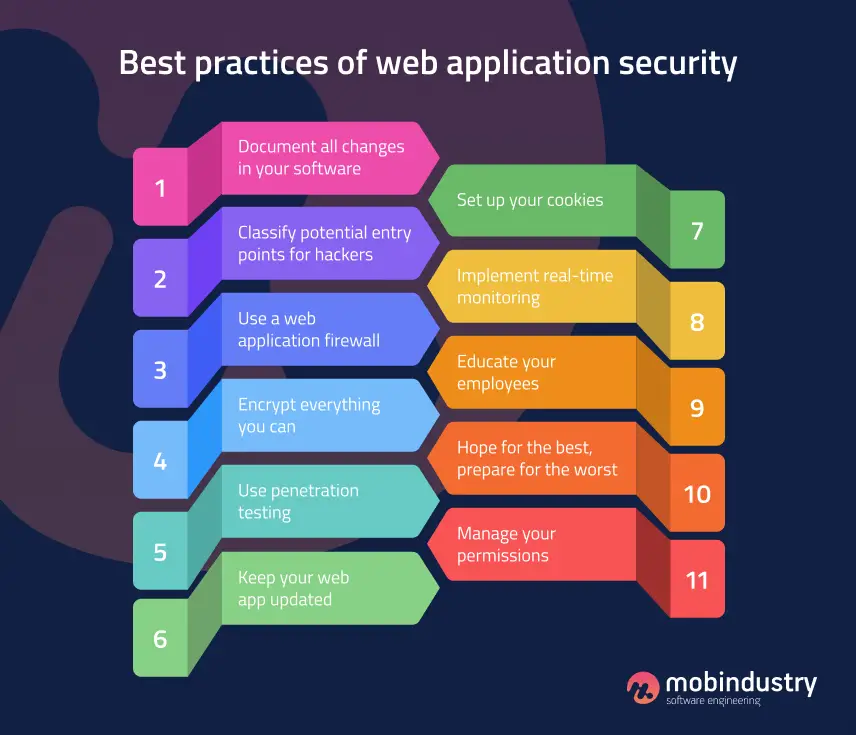Best Practices for Developing Accessible Web Applications

Web accessibility refers to making digital content accessible to individuals with disabilities. It ensures that people with disabilities can perceive, understand, navigate, and interact with websites and web applications. Developing accessible web applications is crucial for promoting inclusivity and providing an equal user experience for all. Here are some best practices to consider:

-
Use Semantic HTML: Semantic HTML elements (e.g.,
, , -
Provide Text Alternatives: Provide text alternatives for non-text content, such as images, videos, and interactive elements. Use the ‘alt’ attribute for images to describe the visual content and ‘aria-label’ for other non-text elements.
-
Use Headings and Landmarks: Structure your content using headings and landmarks such as and
-
Ensure Keyboard Accessibility: Make sure your web application can be fully navigated using only a keyboard. Focusable elements should be accessible in a logical order, and keyboard shortcuts should be provided.
-
Consider Color Contrast: Ensure adequate color contrast between text and background to enhance readability. Use a color contrast checker to verify the contrast ratio meets accessibility standards.
-
Use ARIA Attributes: ARIA (Accessible Rich Internet Applications) attributes provide additional information to assistive technologies about the purpose and behavior of web elements. Use ARIA attributes to define roles, states, and properties of elements.
-
Test for Accessibility: Regularly test your web application using assistive technologies and accessibility evaluation tools to identify and address accessibility issues. Use automated tools like WAVE or aXe, and involve users with disabilities in testing.
-
Follow Accessibility Guidelines: Adhere to established accessibility guidelines such as WCAG (Web Content Accessibility Guidelines) and Section 508 of the Rehabilitation Act. These guidelines provide comprehensive criteria for making web content accessible.
-
Provide Documentation: Create documentation that explains how to use your web application accessibly. This can include instructions on how to use assistive technologies and keyboard shortcuts.

This article provides a comprehensive overview of the best practices for developing accessible web applications. It covers all the essential aspects, such as using descriptive text, providing alternative text for images, using headings and subheadings, using accessible fonts and colors, avoiding using Flash, and testing the website for accessibility. I highly recommend this article to anyone who wants to create accessible web applications.
I’ve been developing accessible web applications for several years now, and I can attest to the importance of following the best practices outlined in this article. By making my websites accessible, I’ve been able to reach a wider audience and improve the user experience for all my visitors. I urge all web developers to make accessibility a priority.
It’s great to see more and more resources available to help web developers create accessible web applications. This article provides a valuable overview of the key considerations for accessibility, and I appreciate the emphasis on testing websites for accessibility. By following these best practices, we can ensure that everyone has equal access to the web.
I’m not convinced that accessibility is really that important. Most people don’t have disabilities, so why should we bother making our websites accessible? I think we should focus on making our websites look good and function well for the majority of users.
Accessibility is not just about meeting legal requirements. It’s about creating a better experience for all users, regardless of their abilities. When websites are accessible, everyone can use them, which leads to increased engagement and satisfaction. I believe that accessibility should be a top priority for all web designers.
Oh, sure, let’s make our websites accessible for the few people who need it. Who cares about the rest of us? Why should we cater to the needs of a tiny minority? I’d rather focus on making my website look amazing and interactive.
I’m all for accessibility, but let’s be real. Most people don’t even know what it means. I mean, who needs descriptive text for images? Can’t people just look at the pictures and figure it out? And what’s the big deal about using accessible colors? I like my websites bright and colorful!
Accessibility is not just a matter of following a checklist. It’s about understanding the needs of users with disabilities and designing websites that work for everyone. By embracing accessibility, we can create a more inclusive and equitable web experience for all.
Testing for accessibility is a crucial step in the web development process. By testing our websites for accessibility, we can identify and fix any issues that may prevent users with disabilities from accessing and using our websites. I recommend using a variety of testing tools and techniques to ensure that our websites are accessible to everyone.
Accessibility is not just a technical issue. It’s a business imperative. By making our websites accessible, we can reach a wider audience, improve our brand reputation, and boost our bottom line. I believe that accessibility should be a key consideration for all web projects.
I’m not sure I buy into the whole accessibility thing. I mean, how many people with disabilities are really using the web? And even if they are, do they really need all this special treatment? I think we’re making a big deal out of nothing.
Accessibility is not just about making websites usable for people with disabilities. It’s about making websites usable for everyone. When websites are accessible, they are easier to use for everyone, regardless of their abilities. I believe that accessibility should be a fundamental principle of web design.
Oh, please. Accessibility is just a buzzword that web developers use to make themselves sound important. Who cares if a few people can’t use our websites? It’s not our problem.
I’m all for accessibility, but let’s be honest. Most people don’t even know what it means. I mean, who needs alternative text for images? Can’t people just look at the pictures and figure it out? And what’s the big deal about using accessible colors? I like my websites bright and colorful!